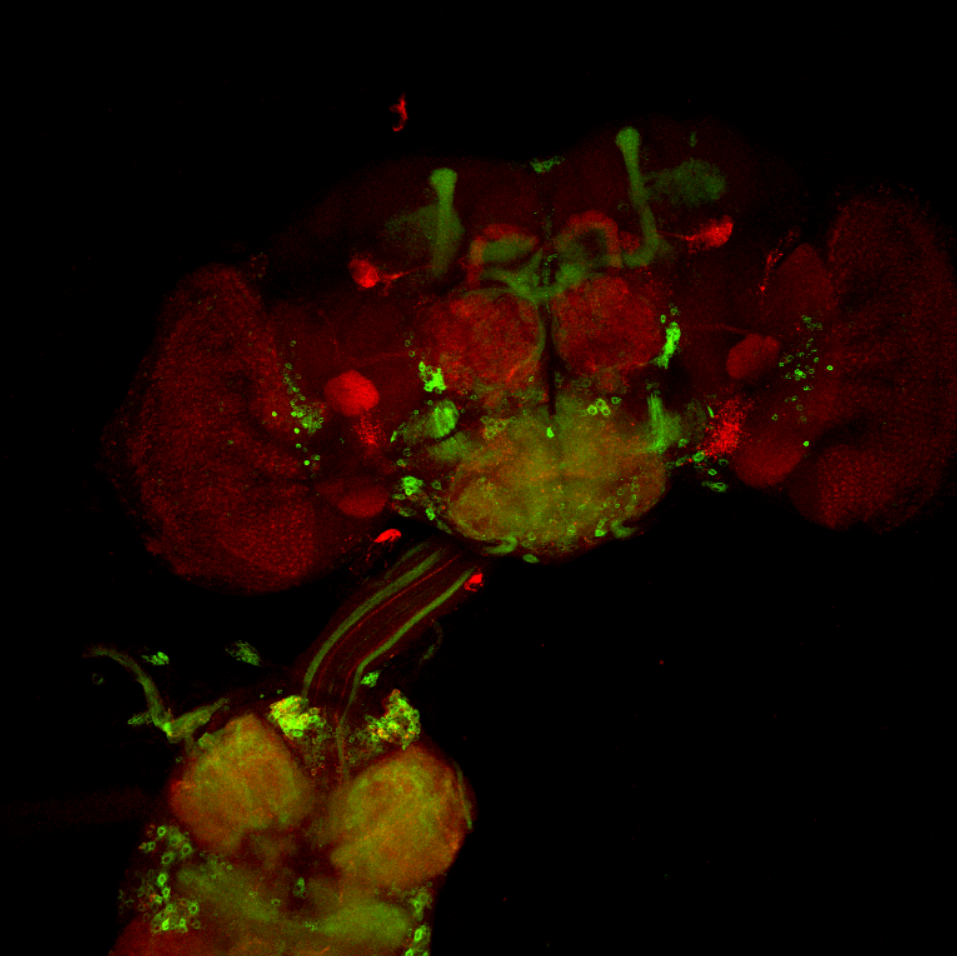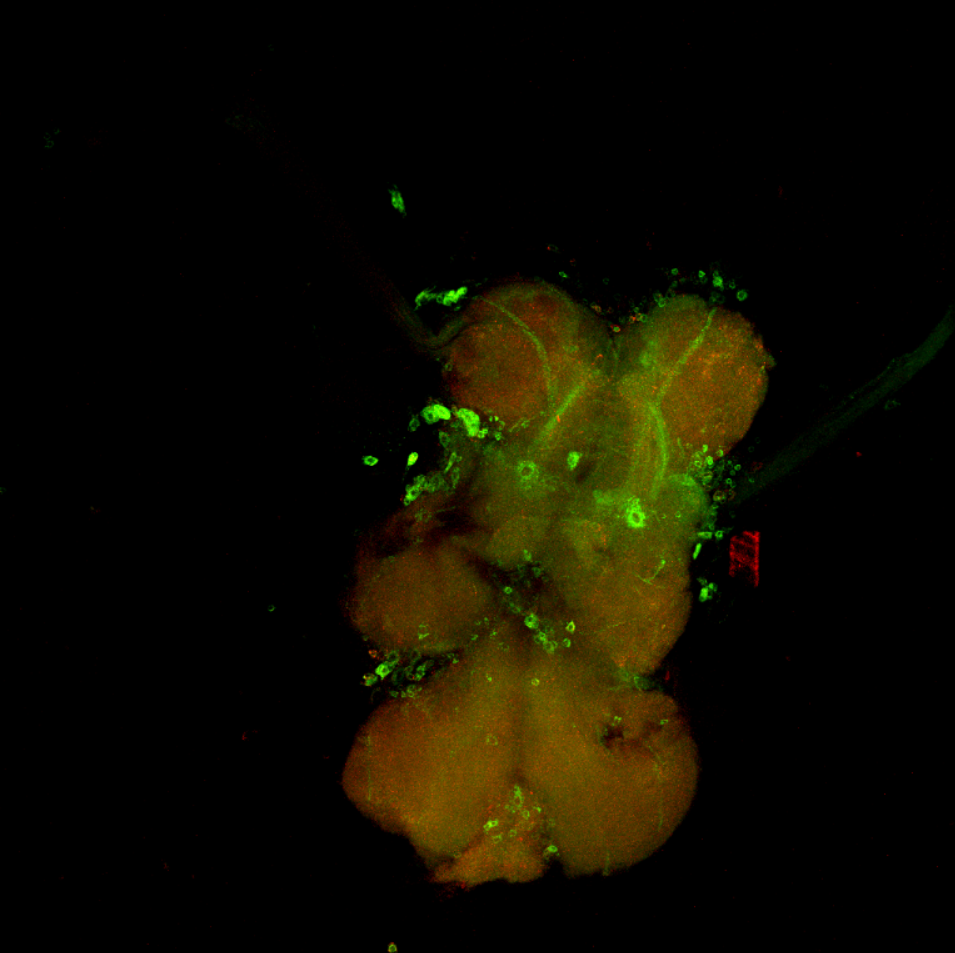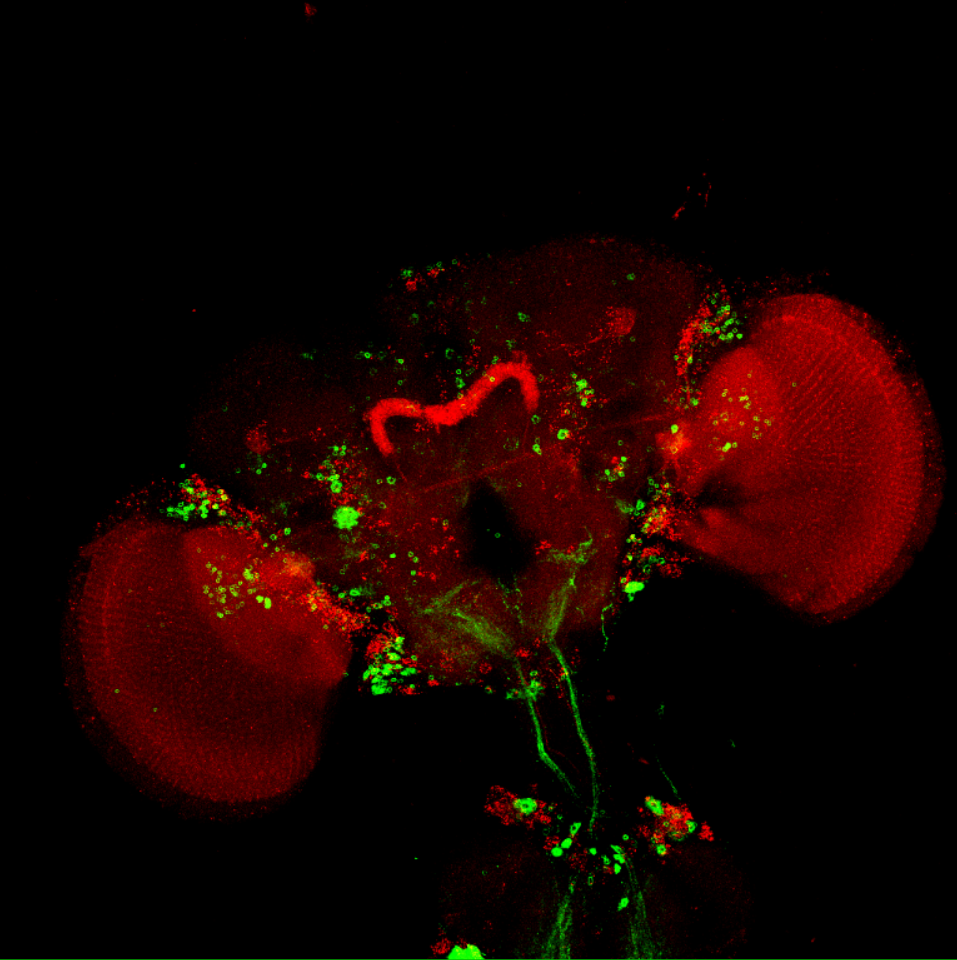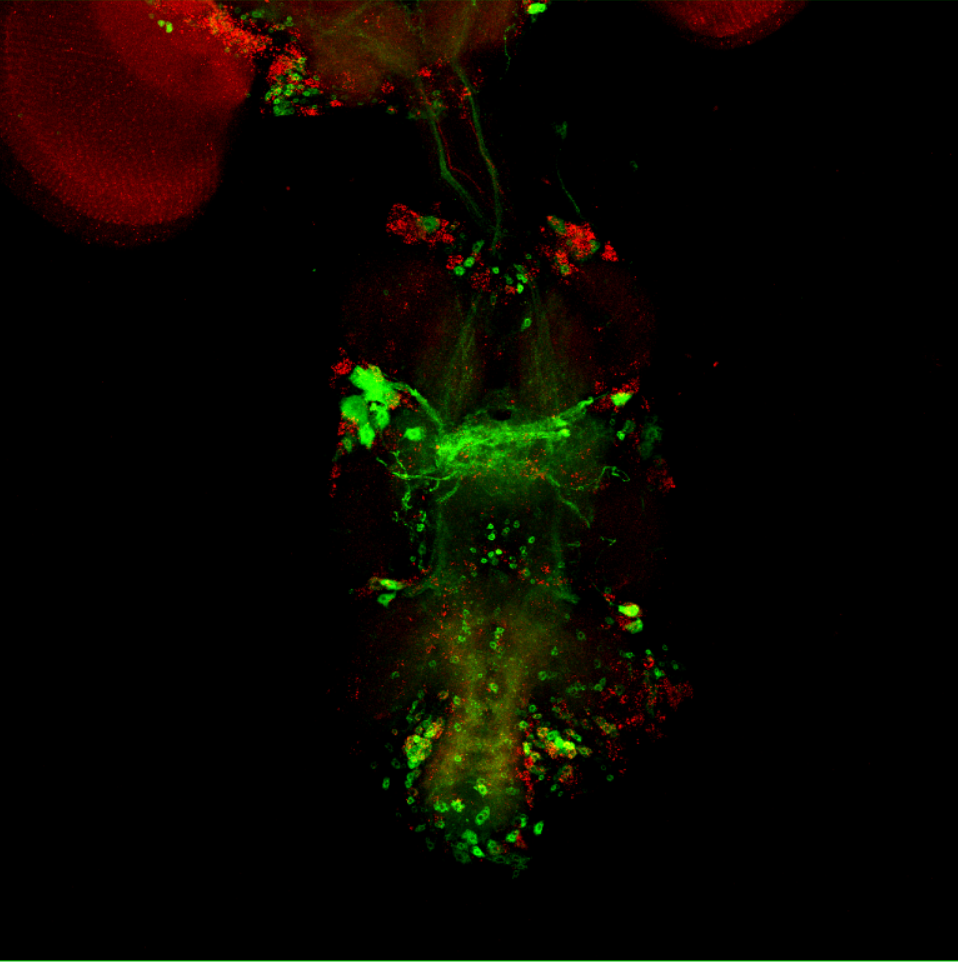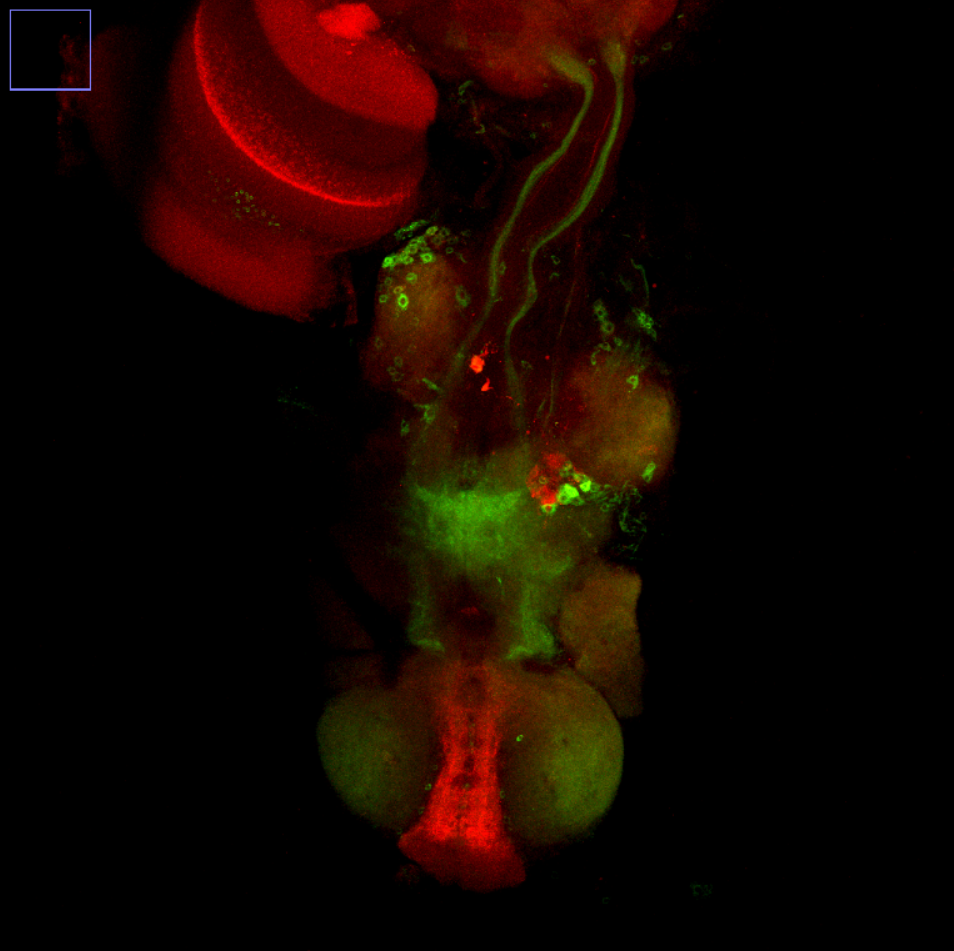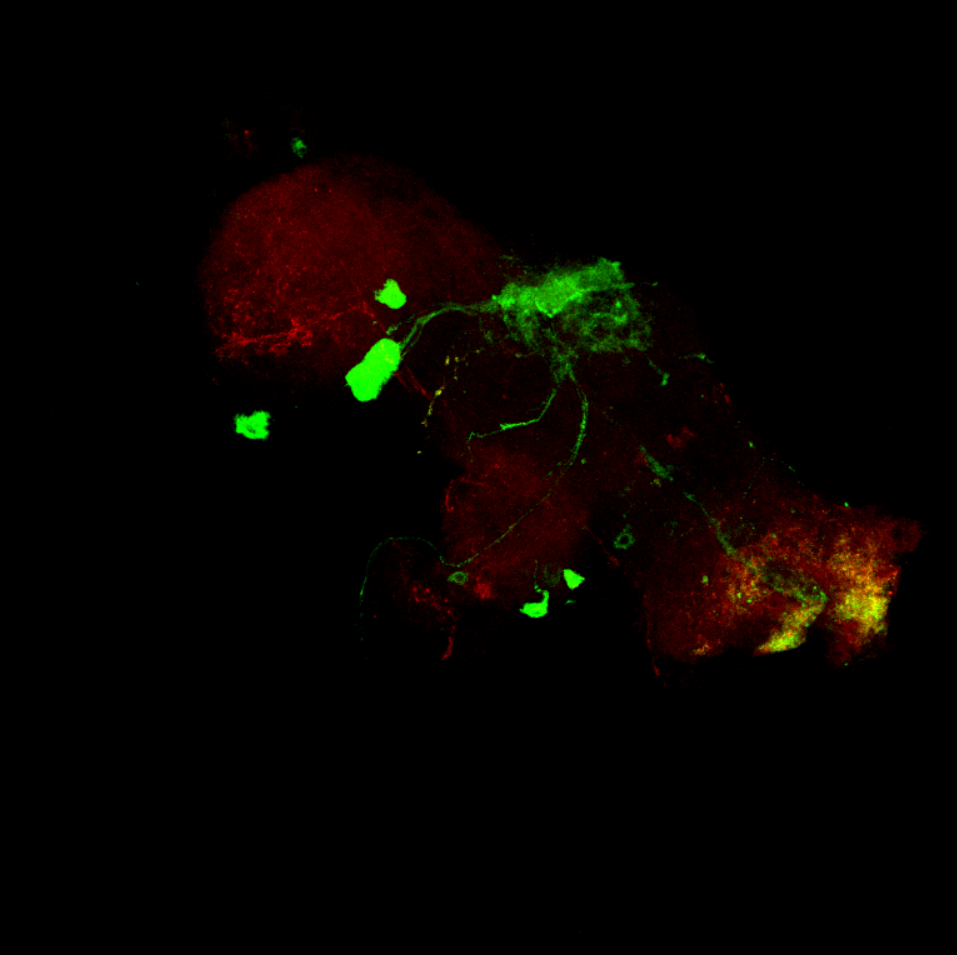Early days: testing individual steering motor neurons in self-learning
on Monday, October 28th, 2024 11:39 | by Björn Brembs
Now that we have established that the plasticity underlying self-learning is located somewhere in the steering motor neurons of the ventral nerve cord, the next question is: which of the neurons are involved. To this end I have now started to knock-out aPKC in either B1 neurons or in B3 neurons. The muscles innervated by these motor neurons are an agonist/antagonist pair and serve to advance/delay the turning point of the wing, leading to a larger or smaller, respectively, wing stroke amplitude. Asymmetry in the activity of these neurons leads to yaw torque – which is the behavior we condition. In the first two weeks, I noticed that all three groups (B1- knock-out, B3 knock-out and genetic controls) seem to fly reasonably well. So far, it doesn’t seem like there are any striking differences between the lines, but it is still early days and about three times more animals are needed before one can draw any firm conclusions:

Category: operant self-learning, PKC_localisation | No Comments
Overlap FoxP – motor neuros/aPKC
on Monday, March 14th, 2022 11:40 | by Andreas Ehweiner
Category: Anatomy, Foxp, PKC, PKC_localisation, Uncategorized | No Comments
c380 driven PKC inhibition
on Tuesday, December 18th, 2012 5:25 | by Julien Colomb
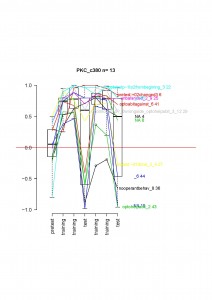
Only one fly not learning and the median would be 0. It looks very similar in the d42xPKCi cross, suggesting that the flies will also show the phenotype.
This will need to be confirmed next year with a new cross.
Other data visible at https://figshare.com/preview/_preview/104549
and later at doi: 10.6084/m9.figshare.104549
Category: operant self-learning, PKC, PKC_localisation | No Comments

